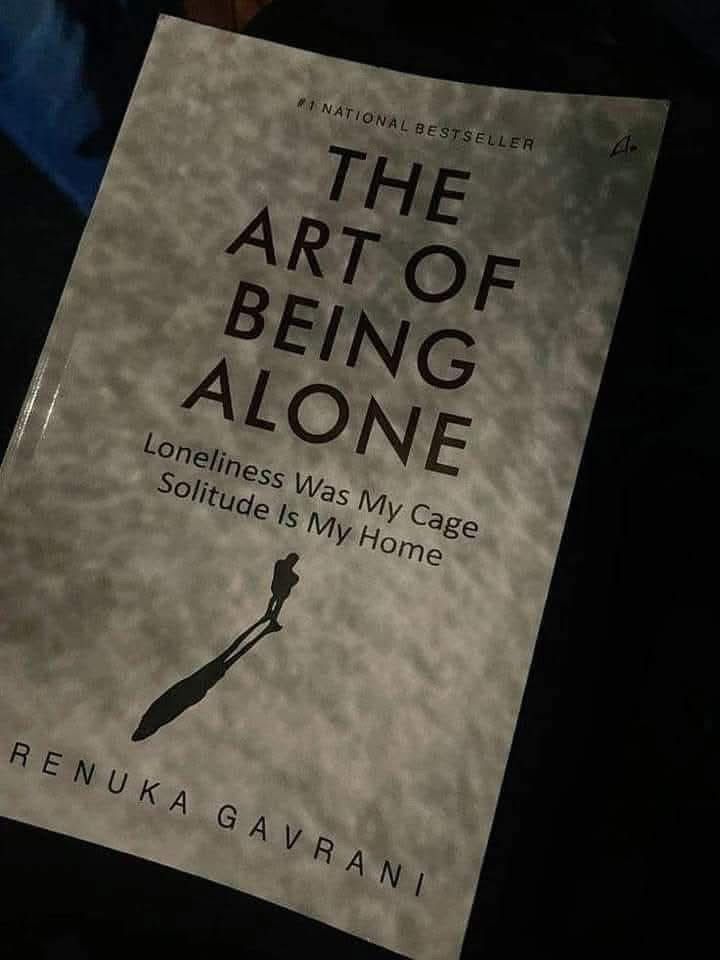
Renuka Gavrani’s The Art of Being Alone is an insightful meditation on the power of solitude, offering a fresh perspective on aloneness as a transformative force rather than a state of deprivation. In a world that often equates being alone with loneliness, the book challenges readers to see solitude as an opportunity for self-reflection, creativity, and emotional independence.
At the heart of Gavrani’s message is the idea that prioritizing solitude is an essential form of self-care. She reframes alone time as something that nurtures rather than isolates, positioning it as a vital practice for emotional well-being. In a society that often glorifies busyness and social connectivity, the book serves as a reminder that stillness and introspection are just as valuable.
Gavrani also explores the importance of developing a strong relationship with oneself. She argues that the foundation for any meaningful connection with others begins with how we treat and understand ourselves. By fostering self-compassion and emotional independence, we cultivate relationships that are healthier and less dependent on external validation. This perspective is particularly relevant in an era where social media and societal pressures often push individuals to seek approval outside of themselves.
One of the most compelling aspects of the book is its discussion on the power of silence. Gavrani views silence as more than just the absence of noise it is a space for deeper self-discovery. In silence, we hear our own thoughts more clearly, allowing us to process emotions and make sense of our inner worlds. This concept aligns with mindfulness practices, where intentional quietude is seen as a tool for clarity and growth. However, while silence can be healing for many, the book does not delve into the fact that some people struggle with it due to anxiety or past trauma. A discussion on how to ease into silence, especially for those who find it unsettling, would have been a valuable addition.
A key distinction the book makes is between aloneness and loneliness. Gavrani highlights that solitude is a choice, a conscious effort toward self-discovery, whereas loneliness is a feeling of disconnection. By shifting our perception of being alone, we can learn to appreciate solitude without associating it with isolation. While this perspective is useful, it does at times oversimplify the experience of loneliness. There are external factors such as mental health struggles, societal structures, and life circumstances that contribute to loneliness, and while a mindset shift can be helpful, it is not always a complete solution.
The book also positions solitude as a catalyst for creativity and productivity. Many great thinkers, artists, and writers have attributed their best work to moments of deep solitude, and Gavrani embraces this idea. Without distractions, we are free to explore our thoughts, experiment with ideas, and tap into inspiration that might otherwise be lost in the noise of daily life. While this is true for many, creativity does not always flourish in isolation. Some individuals thrive in collaborative environments, feeding off the energy of shared ideas. The book would have benefitted from exploring how different personality types such as introverts and extroverts experience solitude differently.
A particularly strong takeaway from the book is the importance of setting boundaries in relationships. Gavrani stresses that solitude is not about withdrawing from others entirely but about striking a balance. Establishing boundaries helps protect our energy and ensures that our alone time remains a priority, rather than an afterthought. This lesson is especially crucial in today’s hyper-connected world, where people are constantly expected to be available. Learning to step back and carve out personal space is a necessary skill for emotional well-being.
There is also a gentle encouragement to find joy in simple, everyday activities. Gavrani reminds readers that happiness does not always have to come from grand achievements or social interactions it can be found in something as small as reading a book, taking a walk, or journaling. These moments of stillness allow us to appreciate life without seeking constant external validation. In a digital age where instant gratification is the norm, this message is a refreshing counterpoint.
Perhaps the most powerful theme in the book is the idea of emotional independence. Gavrani argues that by being emotionally self-reliant, we cultivate inner strength and resilience. Relying less on others for happiness frees us from the fear of solitude and allows us to navigate life with greater confidence. This lesson resonates deeply, particularly for those who have struggled with codependency or the need for external approval.
While The Art of Being Alone is a beautifully written reflection on solitude, it could have benefitted from a deeper exploration of its themes in a broader social and cultural context. Solitude is experienced differently across cultures some societies celebrate it, while others view it as a sign of failure or social inadequacy. Addressing these nuances would have added richness to the discussion. Additionally, while the book’s insights are compelling, some of its claims, particularly about creativity and self-growth, would have been strengthened by psychological research or scientific backing.
Overall, Gavrani’s book is a thoughtful and encouraging guide for those looking to embrace solitude with intention. It speaks to individuals who seek self-discovery, mindfulness, and personal growth, offering practical wisdom on how to find peace in one’s own company. Though it leaves room for further exploration, it succeeds in shifting the narrative around being alone, turning it into an experience of empowerment rather than emptiness.
Critical Review by : Jide Adesina
All rights reserved
@2025

